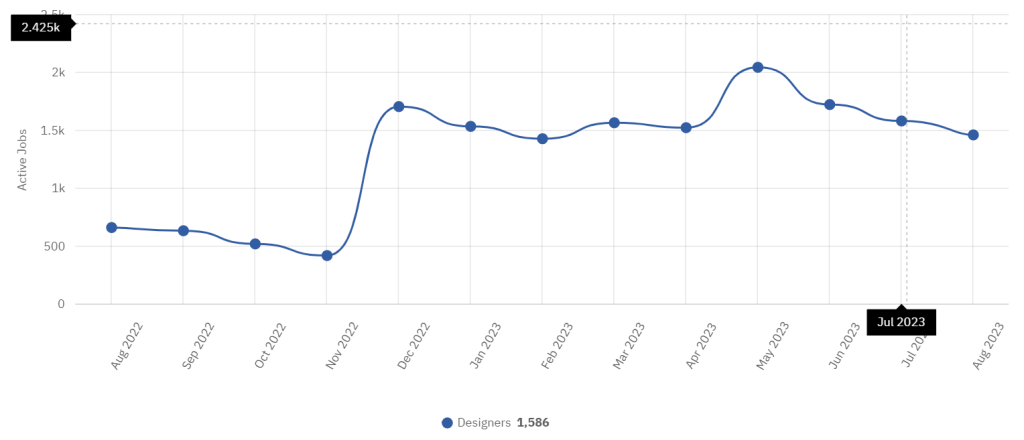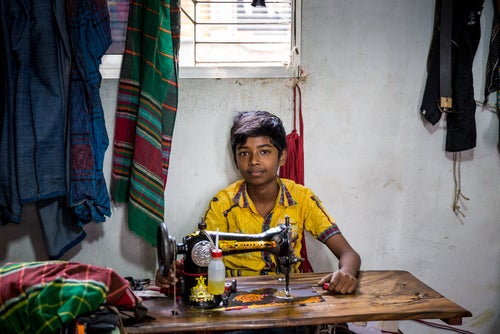The number of fashion designers employed in the apparel sector is going up, according to GlobalData's jobs database.
In August 2022 there were 662 designers employed in the sector but by August this year there were more than 1,400 employed by apparel brands. This is a little lower than in May 2023, when the number of designers peaked at 2,040.
Fashion designer roles peak in May 2023

Source: GlobalData
The figures suggest that fashion brands are still relying on the expertise of designers, despite the increasing threat of AI in the creative sector.
How AI is disrupting fashion design
A study conducted by the Pusan National University, Busan, South Korea in January suggested that AI designs could revolutionise the future of fashion design and serve as an educational tool.
The study, published in the journal Thinking Skills and Creativity, found that garments designed by AI lacked the uniqueness and originality of human designs. However, it also argued that AI could be used to improve the efficiency of the design process, allowing designers to focus on more difficult creative work.
Yoon Kyung Lee, assistant professor and lead author of the study, explained: “At a time when AI is so deeply ingrained into our lives, this study started instead with considering what a human can do better than AI.”
AI is already being used in the apparel sector to optimise supply chain management and reduce waste. It has also found use in creating personalised product recommendations for retail customers.
He said: "It's hard to rule out. The race to the bottom has stripped innovation out of the industry. Will the next step be to cannibalise its creatives? As it's often said: no one is indispensable."
In July, three independent US fashion designers, Krista Perry, Larissa Martinez, and Jay Baron, filed a lawsuit against Chinese fast fashion company Shein for engaging in AI-led “systematic criminal intellectual property infringement”.
The designers claim the fast-fashion brand uses “secretive” AI algorithms to identify and reproduce carbon copies of independent designers’ work – with a tendency to appropriate pieces with the greatest commercial potential.
Our signals coverage is powered by GlobalData’s Thematic Engine, which tags millions of data items across six alternative datasets — patents, jobs, deals, company filings, social media mentions and news — to themes, sectors and companies. These signals enhance our predictive capabilities, helping us to identify the most disruptive threats across each of the sectors we cover and the companies best placed to succeed.















